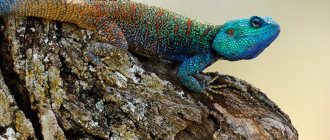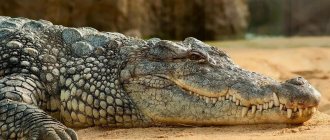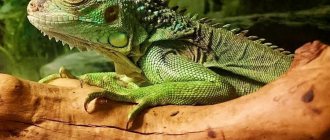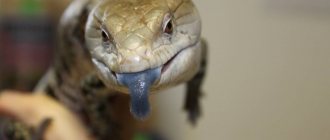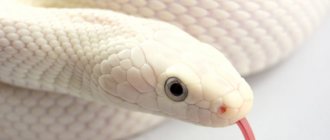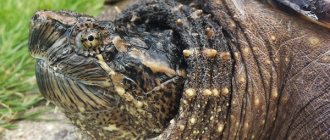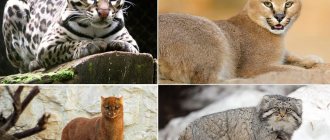I received my first information about lizards from P.P. Bazhov’s tales “The Mistress of the Copper Mountain” and “Two Lizards”. I remember that I really wanted to see the emerald lizard, even without a crown. But in the Moscow region there were mostly brown lizards, small, not particularly beautiful, but nimble, flashed - and it was gone. I only developed a relationship with emerald green lizards after moving to Kuban, in the foothills of the Caucasus. That is, there are countless brown ones running around here, and legless ones crawling, frightening the population with their “snake” appearance, but the main thing is that those same large bright green beauties are also there. There will be an article about lizards, what they are like, where they live, what benefits they provide to gardeners. And about tails, of course, without this there is no point in talking about lizards.
Lizards - neighbors and helpers
Geography of lizard distribution
The order of scaly suborder Lizards is so diverse that it is difficult to give any general characteristics to its representatives. Differences extend to appearance, habitat, and habits.
Quite often, lizards are confused with snakes, especially if the lizard has no legs, but there are a number of significant differences between them:
- The lizard's body is elongated, one can distinguish the head, body, tail, almost all species have limbs with claws;
- Most species of lizards “throw away” their tail;
- the eyes of lizards are equipped with eyelids, it blinks, but the snake’s eyelids are fused, it cannot blink, which is why the gaze seems intent;
- The snake has no hearing organs, while the lizard has ear openings;
- A lizard sheds gradually, but snakes immediately shed all their skin.
The body temperature of lizards is not constant and varies depending on environmental conditions. Regions where it is warm and moderately humid are most optimal for them.
Regions and number of living reptile species:
- Philippines - 204;
- islands of Indonesia – 150-200;
- Sumatra – 127;
- Java Island – 122;
- Central Asia - about 50;
- Transcaucasia – 40;
- Northern Caucasus – 28;
- China – 25;
- Western Europe – 12;
- Manchuria – 6.
As you can see, species diversity in temperate latitudes is significantly less. In high mountain areas, the maximum altitude at which reptiles can live is 5400m.
Reference! Only one species lives beyond the Arctic Circle - the viviparous lizard.
Fifth place - copperheads
Pallas's Cottonmouth
In fifth place are the Pallas's Cottonmouth, Stone, Ussuri, and others. These are not very poisonous, but still quite dangerous snakes that can kill a person with cardiovascular problems. The venom of these snakes contains neurotoxins and substances that disrupt the normal functioning of the cardiovascular system.
Snakes can be found in Siberia, in its southeastern territories, in the Far East, and their habitat also covers the southern territories of the Volga region and Primorye. A copperhead bite takes a long time to heal, up to one and a half months, and is very painful.
Cottonmouths of all varieties have a specific head structure that resembles that of a frog. They have a vertical pupil, and the color can be from light brown to rich marsh, always with specks.
Habitat and appearance features of lizards
Under certain conditions, a particular species acquires specific characteristics, adapting to its environment. Moreover, these features are expressed in appearance, in methods of nutrition and reproduction, rhythm and daily activity, and thermoregulation.
Desert lizards have outgrowths (scallops) on their toes, a kind of skis, which make it possible to move freely through the sand and dig holes and holes.
Species that live on rocks and in forest areas are characterized by the presence of elongated limbs with claws and a long tail for clinging to the surface, and in geckos, special hairy extensions have appeared on the toes below to grip a smooth vertical surface.
Serpentine lizards without limbs have adapted to move, wriggling like a snake, and burrow into loose soil.
The body temperature of species living in deserts and tropics is 26°-42°C; in species living in temperate latitudes and nocturnal species it is much lower. If the external temperature rises significantly, the lizards take refuge in the shade, and when the ambient temperature drops for a long time, they hibernate, reducing any activity. Hibernation in regions of temperate latitudes can last 6-30 weeks.
Species living in the steppes acquired the ability to trot and even run using only two legs, and the iguana Basiliscus americanus learned to run on the surface of the water, splashing its hind limbs. The long tail helps the lizard balance and control its body while running.
Second place - common viper
Common viper
The greatest number of problems and deaths when meeting a snake in Russia is caused by the common viper. Up to 30 percent of bites have serious consequences; a person may fall into a coma, convulsions, bleeding, and kidney failure may occur.
With treatment, it is possible to normalize a person’s condition in two to four days, but without medical assistance, death can occur, and with a small amount of injected poison, the consequences are felt for up to a year. This is not a very large snake with sizes ranging from half a meter to a meter, is found in damp places, and has a greyish, marshy color.
Types of lizards in Russia
About 80 species of reptiles live on the territory of Russia, and most of them are lizards. There are species that are found in both Europe and Asia, and there are those that can only be found in a certain area. The most common species is the fast and viviparous lizard.
Fast lizard
These nimble creatures are found everywhere - we can meet them on the banks of the river and in a clearing near the forest, in a garden bed and on a path in the garden, on a lawn near a house and in a city park.
Lizards love to bask in the sun, but at the slightest rustle they hide under a snag, in any burrow, in loose soil or sand. Finding it after this is almost impossible, since the color blends in with the surrounding area, and its excellent hearing warns of danger.
She has many enemies - birds, animals, snakes love to feast on her, and near a person’s home, even cats are not averse to catching a nimble animal.
Their size ranges from 20-35cm. The elongated body is colored in grayish-brown tones, the abdomen is much lighter, there are spots and stripes on the sides and back. The tail occupies more than half the length of the body, and the toes on the long legs are equipped with sharp claws.
The forked tongue is almost always stuck out to instantly grab any insect flying by. The diet is varied: worms, grasshoppers, flying insects, mollusks, young small rodents. The peak of activity occurs in the evening.
Reference! The nimble lizard has the ability, when in danger, to throw off its tail, which still moves for some time, attracting the attacker. After some time, the tail will grow back, but will be slightly shorter than before.
During the mating season (March-April), the male scours the surrounding area in search of a female, and even stands on his hind legs to increase visibility. At this time the color changes to bright green. The female lays eggs in a soft shell in a hole, and after 1.5-2 months small lizards appear, up to 6 cm long.
In the natural environment it lives for about 3 years, at home - 5-6 years.
Viviparous (swamp, forest, mountain) lizard
The viviparous lizard lives in large areas from Ireland to Sakhalin, and has even settled beyond the Arctic Circle. Habitats: forest glades, ravines, wet banks of reservoirs and swamps, hummocks in tundra swamps, wet areas near human habitation.
On a note! Viviparous lizards do not build their homes, no matter where they live, preferring to live in other people's burrows, in old stumps, holes, between the roots of bushes and trees.
A characteristic feature of the appearance is its small size (15-18 cm), brown, brown, yellow-brown color, the presence of stripes and spots along the ridge and on the sides of the body, and a long (more than half of the entire body) tail.
It is very easy to distinguish males from females - they are smaller in size, the abdomen is orange or brown-red, and the females are larger and the abdomen is gray-white, pale green or pale yellow.
Unlike agile lizards, viviparous lizards feel great in water, they can swim, dive, move along the bottom and wait out danger by burying themselves in silt.
In the fall, when daytime and nighttime temperatures drop to +10°C, lizards reduce activity and hibernate, and in the spring, when nighttime temperatures rise and the daytime air warms up to +15°C and higher, they wake up. At this time, they can be found in large numbers on warm stones and hillocks basking in the sun.
After hibernation (April-May), the lizards mate, and in July the cubs appear, hatching from eggs in a soft transparent shell. The dimensions of newborns including the tail are 3.4-4 cm. Mothers do not worry about their children and they are immediately actively involved in the life process.
The diet consists of various crawling and flying insects; viviparous lizards themselves are included in the diet of frogs, large birds, snakes, and large fish. The lizard immediately swallows its food without chewing it.
The life period in nature is about 6 years, in captivity under favorable conditions – 7-8 years.
Is it worth keeping snakes in the house and how can this threaten the owners?
Exotic lovers do not refuse to keep reptiles at home. Terrarium animals are of a certain value and the market is ready to offer a variety of species of reptiles. You can buy almost any reptile online, from black mamba to king cobra. But few people know that these two species are still poorly studied and there is practically no antidote for their bites.
An experienced herpetologist knows the rules for handling dangerous animals. But even experts are not immune from bites. The sensational story of the death of Arslan Valeev serves as clear confirmation of this. A terrarist with extensive experience kept an incredible number of species and was engaged in their breeding, which is extremely rare in inanimate nature. However, the specialist died from the bite of a poisonous snake, although he had plenty of experience in handling them.
If you want to treat yourself to something “exotic”, remember that snakes are very strong animals. They will not ask permission and will quickly use their poisonous fangs at the slightest threat. And even if a portion of the toxin does not kill, it will cause severe and prolonged pain. Today, even zoos refuse to keep poisonous snakes. If some hooligan breaks a window, one individual will kill several people with its poison.
When going on vacation or for a walk, you should take care of insurance. A reptile bite is an insured event, so precautions will not be superfluous. And to protect your property from vipers, call us - specialists will offer and help you choose high-quality snake repellers.
Lizards in the desert
In the deserts of the world, where a large number of reptiles are found, many species of lizards live.
Long-eared roundhead
This type of lizard is a typical representative of the desert fauna and can be found in the shifting sands of the deserts of Central Asia and the Middle East. They can also live on dense soil, but only if there are sandy places nearby.
The size of the roundhead is small - the length of the body together with the tail reaches 24 cm, weight - 40 g. The coloring of the scaly body the color of sand and a pattern of stripes and spots helps to blend in with the environment, which makes the lizard inconspicuous from above. The breast is white below and has a characteristic dark spot.
A distinctive feature of the species is a large round head with raised eye tubercles, skin folds along the edges of the mouth resembling ears, long paws with long fingers and plates between them. It is these triangular plates that help move through quicksand, preventing the animal from falling into the shifting sand.
It is believed that nature provided the lizard with folds of skin near the mouth for intimidation - the appearance of an open red mouth and swollen folds give it a frightening, sinister appearance.
Interesting! In case of danger, roundheads can instantly dive into the sand without leaving any traces behind. To do this, she presses tightly against the sand and begins to vibrate with her whole body.
The lizard is not particularly active. In the morning, it crawls out into the sun from a hole dug by itself, and if it overheats, it lifts its body above the sand, resting only on its wrists and heels.
Roundheads do not know how to make sounds and communicate using body movements, moving the tail in different directions and at different speeds, twisting it into a spiral. In addition to locusts, ants, butterflies, caterpillars, and bugs, it feeds on herbaceous plants.
Why are people afraid of snakes?
Biologists are sure that the fear of meeting a reptile is inherent in human instincts. Even an experienced herpetologist will be frightened if an object resembling a crawling specimen is thrown at him. Assessing the behavior of great apes, experts revealed many interesting facts:
- Chimpanzees signal the approach of snakes to their relatives. Monkeys scream like a woman would scream if she saw a reptile.
- To avoid encounters with dangerous “neighbors,” monkeys make nests on elevated surfaces—in trees and bushes.
- All monkeys are ophidiophobic. This word means a terrible fear of reptiles.
People are in many ways similar to their ancestors, and therefore, even on a warm day, we rarely sit on bare ground. It’s easier for us to move to a chair and go to sleep not on the floor, but on the bed. And it’s not a draft, it’s an instinct that tells us to protect ourselves from snakes.
Some experts explain the fear for religious reasons. In the Bible, the Tempter Serpent led to the fall of the “first people.”
Perhaps there is common sense here, but most often people themselves are to blame for bites. Zoo owners and terrarium owners are confident that animals are to blame for only 1-2% of accidents. Incorrect behavior of people, their rash actions and ignorance of the characteristics of animals lead to bites, and as a result, the destruction of reptiles.
But still, who should you be afraid of and who can you meet in the vastness of your homeland? The guide to snakes in Russia talks about this.
Lizards in the tropics
The zones of tropical forests and temperate forests are inhabited by species of lizards that differ significantly from each other. The habitat leaves an imprint on the appearance and behavior of forest lizards. Among them, the most interesting is a unique representative of the agamidae family - the flying dragon, which lives in tropical forests.
Flying dragon lizard
“Dragon” in relation to this species is said quite loudly - the word “little dragon” would be more suitable. Most likely, the lizard received this name because of its external resemblance to a flying animal - in flight it really resembles a flying dragon.
Flying lizards live in the treetops of tropical forests in Southeast Asia and practically never descend to the ground. Descent is necessary only for laying eggs, and if the flight does not go well.
Small (up to 40 cm) lizards fly (glide) from tree to tree using folds of skin spread like wings. The body is also adapted for gliding - narrow and long, the tail, like a steering wheel, helps to change direction, there is a growth on the throat that balances the position of the body.
On a note! The flight length is 20-60m, the direction is different - vertically, horizontally.
When the “wings” are folded, it is difficult to see the dragon - the color merges with the foliage and branches, and when they are spread out, they appear to be a flower due to their bright color.
Dragons feed on ants, insects and their larvae. Lifespan is about 5 years.
Fourth place – tiger snake
Tiger snake
This is not a very common snake, which is found mainly in the Far East. The snake has a greenish color with orange “ears”, dark specks on the back. The level of danger of a snake is unpredictable - it does not have its own poison, but it is capable of absorbing toxic substances from the toads it eats; these toxins accumulate in the salivary glands of the snake.
Interesting: The most dangerous jellyfish in the world - list, photos and videos
When bitten, medical attention is required, as the concentration of the substance can reach a level where a person is fatal. But the bite may also be harmless.
Lizards in an apartment
It has become fashionable to breed exotic animals and keep them in apartments. Lizards are no exception, but not all species are suitable for keeping a home. They need to create certain conditions and become familiar with their way of life in their natural habitat.
Types of lizards to keep in an apartment:
- geckos - sizes 1.5-35 cm, flattened body, thick tail, short paws, can move along smooth steep surfaces, live 15-20 years;
- iguanas - body length in young individuals is 20-25 cm, in adults - 60-70 cm, the body is narrow, elongated, the tail is long, the head is large, there is a large pouch under the throat, they live 20 years;
- agamas - a flat and thick body grows a little more than 50 cm, a triangular head, they live 10 years;
- chameleon - body size depending on the variety is 3.5-70 cm, long tail that can curl into a spiral, long limbs with claws, able to change skin color, lives about 4 years;
- currents - grows up to 40cm, is capable of making loud sounds, lives 12-14 years.
5 / 5 ( 1 voice )
Interesting facts about the animal
- The point of particular pride of reptiles is their very long tail.
- A disturbed reptile can be seen in rodent burrows.
- The sand lizard can be observed on human-cultivated lands. Uprooted and plowed lands are well suited for intensive breeding of insects, and sun-warmed soil helps create ideal living conditions and increase the number of lizards.
- In some places, reptiles have adapted to life on the side of the road.
- The reptile is becoming increasingly rare in fields treated with pesticides.
- In some lizards, after losing part of the tail, a new one grows, which bifurcates at the end, or even has three thin ends.
Our lizards and their tails
Our area is inhabited primarily by the meadow lizard , which is relatively small and inconspicuous, and what appears to be a medium-sized lizard , bright green in color with blue tints in the spring, during the breeding season. Medium-sized lizards have occupied a hillock closer to the forest, and meadow lizards are milling about near the house too. Sometimes the kitten drives them into the house.
Our lizards have a hard life. A young dog and a young cat regularly bite off their tails, posing as hunters. The average lizard fell into the dog’s paws only once - I saw the dog grab it and throw it. The brave lizard hissed at the huge dog and took threatening poses. I didn’t risk picking it up - the teeth looked impressive; I just held the dog until the lizard disappeared. Apparently, there was no major damage: the tail was in place and disappeared quickly. But injured meadow lizards are often encountered. Both tailless and with tails growing back.
During the day, a lizard that is warm and nimble is quite difficult to grab by the tail. But in the mornings, when reptiles are inactive and go to sunny places, they are very vulnerable, and that’s when our animals grab them by the tails.
In science, the process of a lizard throwing off its tail is called autotomy (sometimes spelled autotomy). The tail vertebrae of lizards have special cartilage pads in the middle of the vertebrae. And they are surrounded by special muscles. In case of danger, the muscles contract sharply and break the vertebrae along one of these pads. That is, the lizard itself throws off its tail. The tail, which has gained independence, still twitches for some time, distracting the predator towards itself. During this time, the lizard manages to hide in a secluded place.
Subsequently, the tails grow back. They differ in color; in our lizards, for example, they are darker than the overall color.
I had a chance to observe the process of incomplete discarding of the tail. Apparently the dog grabbed the lizard by the tail. I caught the moment when the lizard was sitting in the middle of the paving and its tail was a different color, darker than the lizard itself. While I was locking the dog in the house, saving the reptile, the color of the tail changed to match the main color. And only when she took the lizard in her hands (she was sedentary due to all these misadventures, apparently in shock), she discovered that her tail was partially torn off, but not completely. She hid the lizard in a secluded place, released the dog and scolded her.
It turns out that such cases also happen and are not even that rare. This is called incomplete autotomy and the regeneration processes in these cases do not go according to the original plan. The lizard recovers part of the tissue from its half-torn tail, and a new tail grows from the damaged area. It turns out to be a two-tailed lizard. There are also three-tailed ones; a case with six tails has been noted. If anyone encounters such a miracle, it’s not Chernobyl’s fault, it’s just that something went wrong during the autotomy process.
Everything described does not in any way mean that you need to tear off the lizards’ tails and see what happens. Very useful creatures that make it easier for gardeners to control pests. I didn’t mention legless lizards because they clearly deserve a separate story.
Subscribe to our free e-mail newsletter. In weekly issues you can expect:
Videos about gardening, landscape design, indoor plants. On our channel you will find tips for effective gardening, master classes on growing plants and caring for them.
Subscribe and watch for new videos!
Real-time communication in our telegram chat. Share your discoveries with beginners and professionals. Show photos of your plants. Ask your questions to experienced gardeners!
Do you have any questions? Ask them on our forum. Get the latest recommendations and advice from other readers and our writers. Share your successes and failures. Post photos of unknown species for identification.
We invite you to our groups on social networks. Comment and share useful tips!
Source
Contender for the role of the Mistress of the Copper Mountain
The sand lizard (Lacerta agilis) is larger than the viviparous lizard and can reach up to 35 cm (with tail). The color varies greatly: males can be yellowish-brown, light green, greenish and bright green. Females, as is customary in nature, are much more modest; they are yellowish-brown, brownish-gray, brown and rarely green. Juveniles are more striped, adults have spots.
Despite its name, the fast lizard is inferior to the viviparous lizard in speed. Which is not surprising, given the dimensions. But she can suddenly change direction of movement, catch flies in a jump and climb trees.
This lizard, due to the same increased dimensions, requires more heat, and as habitats it chooses road embankments, the edges of sparse dry forests, the slopes of ravines and gullies, in general, where it is drier and hotter. Reptiles gain heat both from the sun and from heated stones, sand, and earth. Probably many people saw sedentary lizards basking in the sun in the morning. As soon as they warm up, they immediately begin searching for food.
Lizards have color vision, good hearing and smell, and they are good hunters. They feed mainly on insects and their larvae. They do not disdain spiders, woodlice, and snails. They are quite capable of gobbling up both a smaller lizard and young animals of their own species—apparently, they do not feel any remorse.
Having a completely camouflage coloring, but a relatively large size, nimble lizards are forced to be very careful - predators do not sleep. They have plenty of enemies: daytime birds of prey, corvids, shrikes, snakes, hedgehogs, moles, hamsters, cats, canines, mustelids. Therefore, they try not to stray too far from the shelters.
They hide in piles of branches, piles of stones, and rodent holes. They can also dig their own burrows.
Unlike the viviparous lizard, the sand lizard lays eggs that require incubation. Therefore, pregnancy is shorter - about a month.
But the attitude towards the offspring is also quite disregardful: having laid eggs in a hole closer to the surface of the soil or in piles of soil thrown out by moles, mole rats, voles (loose and warms up well), the mother usually does not return to them. The eggs develop for about another month and a half if no one eats them and if the conditions are favorable. Then, gnawing through the shell, small lizards emerge into the light and begin an independent life.
For gardeners, lizards are invaluable helpers: they rush around the site all day long and catch insects flying, crawling, hanging on leaves, stems and trunks, as well as hiding in the litter. The only bad thing is that the good ones are eaten just as much as the bad ones. There’s nothing you can do about it: the forest is being cut down and the chips are flying.
The most Russian lizard
The length of a viviparous lizard with a tail usually does not exceed 20 cm, more often about 15 cm. Adult lizards are colored brown, brown with yellowish or greenish-brown with spots and stripes. Females differ from males in the nature of the pattern, greater “roundness,” and a lighter, spotless abdomen. Sometimes there are completely black individuals.
For living, they prefer not the forest itself, but old clearings, burnt areas, edges, clearings, clearings - where there is more sun. Still, lizards belong to cold-blooded animals (the name now accepted is poikilothermic). They quite willingly settle near human habitation: people always surround themselves with a variety of garbage, providing shelter for small creatures. And in cold weather it is warmer near human habitation.
Lizards have winter quarters depending on the climate: where temperatures in winter are not very low and there is a lot of snow - in the forest floor, under heaps of branches, where it is cold - in the ground, in cavities and other people's burrows. The depth depends on the temperature in the soil layers. Choose dry places. They also spend the winter depending on the region: at the end of August in the north and in October in the south.
In spring, reptiles emerge from their hiding places into the sun as soon as thawed patches appear in the places where they spent the winter. Warming up. They feed on small animals that crawl to the surface. The viviparous lizard's menu includes insects and their larvae, spiders, centipedes, and snails. In general, whatever small thing comes out and runs around, crawls or flies - everything goes into food for the lizard.
Having refreshed themselves and warmed up, as is customary for living creatures in the spring, they begin to mate. Pregnancy in females lasts 70-90 days, yet in cold-blooded animals, metabolic processes are highly dependent on the ambient temperature. Lizards are born in groups of 10 in adult females and half as many in young ones. Small, 3 centimeters long, dark.
Strictly speaking, the lizard is not truly viviparous: lizards are born in thin egg shells, from which they emerge in the first half hour. In the first days, the babies hide in cracks in the soil and do not feed. Mom, and even more so dad, as a rule, do not care about them. The babies need to grow up and fatten up before winter. They will grow and mature until puberty for two years. Those who survive, of course, the percentage of those who reach maturity is usually low.
The nimble reptile has many enemies: birds of prey, snakes, and small predatory mammals. Frogs and lizards of other species eat young animals - just have time to dodge. In the water, fish are not averse to snacking on them. Because the viviparous lizard has a peculiarity - it swims well, dives, can run along the bottom of a reservoir and burrow into silt. At the same time, it feeds on aquatic trifles.
